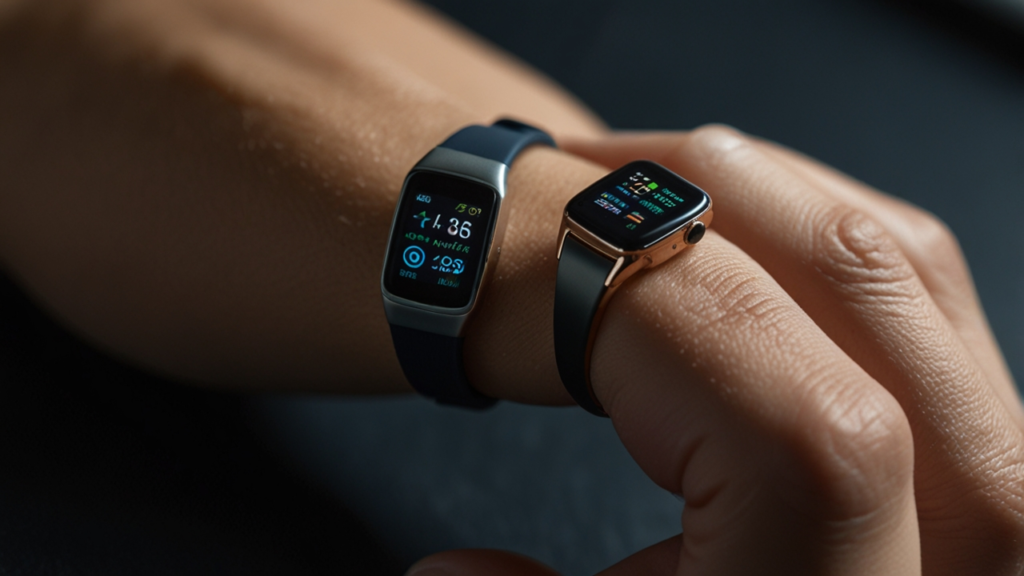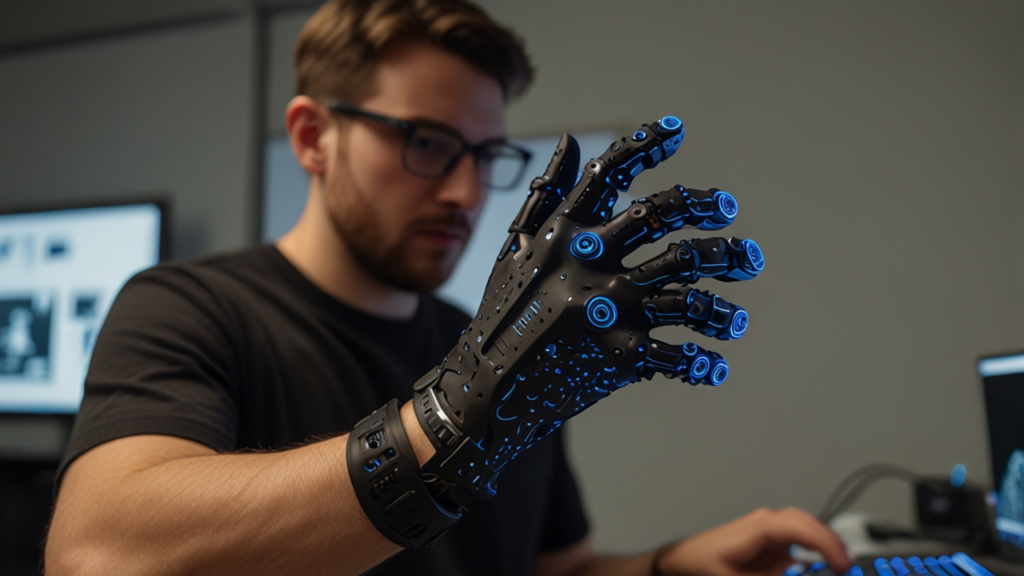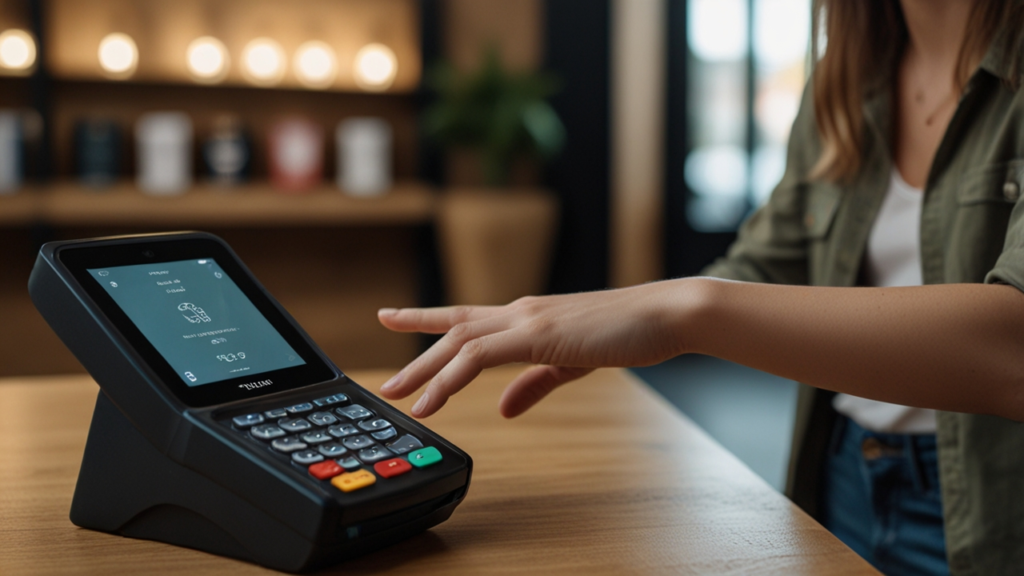Smart Rings: 5 Health Features
Smart rings have emerged as a cutting‐edge solution in today’s rapidly evolving digital health landscape. They combine advanced sensor technology with sleek, minimally invasive designs to offer users discreet, continuous insights. Their ease of use and innovative functions make them a popular choice among tech enthusiasts and health-conscious individuals alike.
The journey of smart rings from simple notification gadgets to multifunctional devices has been fueled by breakthroughs in microelectronics and wireless communication. Their evolution reflects both the growing demand for compact wearable devices and advances in clinical-grade monitoring. This progress not only enhances daily life but also contributes valuable data to the health industry.
In this article, we explore various aspects of smart rings, including their history, technological enhancements, practical applications, and future trends. Whether you are curious about their design or interested in their impact on digital health, there is plenty here to engage your mind and inspire further inquiry.
Table of Contents
Introduction to smart rings
Overview and Key Features
Smart rings are compact devices that integrate cutting-edge sensor technology into a small, finger-worn design. They are engineered to collect a variety of health and activity data in real time. By leveraging microelectronics and wireless connectivity, these devices provide continuous insights into users’ daily routines. In this section, we explore the key features that have driven their popularity in today’s market.
Early iterations focused on basic notifications and contactless payments. Today, smart rings incorporate multiple sensors such as optical heart rate monitors, accelerometers, gyroscopes, and even SpO2 sensors to measure blood oxygen levels. Many devices now add features like sleep tracking, body temperature monitoring, and gesture controls to enhance usability. This evolution has seen manufacturers integrate sophisticated algorithms and cloud-based analytics to process collected data.
For instance, brands like Oura and Motiv revolutionized the concept by integrating advanced health sensors. Their approach has been validated in over 50 peer-reviewed research studies. In addition, industry analysts note that the market for these devices was valued at under $2 million in 2016, but has since experienced explosive growth. You might ask, have you experienced something similar in the evolution of everyday gadgets?
Discover more about the innovative potential of these devices through insights shared on Wearable Tech blogs and platforms.
User Benefits and Design Insights
Users appreciate smart rings for their unobtrusive design and ease of use compared to bulkier wearables. The compact design allows for continuous wear without discomfort, making them ideal for day and night usage. Additionally, with rechargeable batteries that last between three to seven days, these devices offer convenience along with high performance.
Design-wise, smart rings are crafted from durable materials such as titanium, ceramic, and resin. They are engineered to be water-resistant and comfortable, ensuring they can be worn 24/7. This balance between functionality and aesthetics is a prime example of how technology can blend seamlessly with everyday accessories.
The integration of health tracking features into such a small form factor has transformed the landscape of digital health. This innovation particularly resonates with users who seek discreet monitoring solutions. Have you experienced a device that escalates everyday functionality while maintaining elegance?
For additional perspectives on design trends, check out recent analyses on Mobile & Gadgets and related sources.
Evolution and History of smart rings
Historical Development and Milestones
The journey of smart rings began in the early 2010s as an offshoot of early fitness trackers and smartwatches. Initial models like the NFC Ring (2013, UK) and Ringly (2015, US) paved the way for more advanced iterations. These early devices were limited to basic functions such as notifications and contactless payments.
Over time, significant milestones were achieved as companies like Oura (Finland/US) and Motiv (US) expanded the capabilities of their smart rings. By late 2010s, advanced sensors enabled functionalities like heart rate monitoring, sleep tracking, and activity logging. Industry data suggests that, according to Persistence Market Research, the market experienced rapid growth fueled by the global interest in discreet, always-on health monitoring.
In addition, academic research during this period highlighted challenges such as sensor miniaturization, battery management, and user comfort. The efforts of international tech hubs, from North America to Asia, contributed to a rich developmental history with diverse cultural influences. Have you noticed technology evolving steadily through global influences?
Regional Adoption and Growth Patterns
Different regions have adopted smart rings at varying rates. In the Americas, early adoption was driven by tech startups and health-conscious consumers. The United States and Canada witnessed robust growth thanks to a high level of digital device integration.
Meanwhile, European markets emphasized privacy and data security, with Finland’s Oura ring playing a key role in shaping regional standards. Research indicates that user preferences in Asia, especially in Japan and South Korea, leaned towards compact and fashionable wearable devices integrated into daily life and corporate wellness programs.
According to insights from DataM Intelligence, these regional dynamics continue to drive market expansion, with global valuations projected to exceed $1.1 billion by 2030. Have you seen the impact of regional preferences on product designs in your travels?
How wearable technology Enhances smart rings
Advanced Sensor Integration and Performance
Modern smart rings integrate an array of sensors that capture detailed biometric data. These sensors include optical heart rate monitors, accelerometers, gyroscopes, SpO2, and skin temperature sensors. The integration of these components transforms simple rings into powerful health devices.
By leveraging advanced microcontrollers, smart rings preprocess collected data before transmitting it to companion smartphone apps. This distributed data processing, often enhanced by cloud AI tools, allows for personalized, real-time insights. An excellent example is the Oura Ring, with its high correlation to clinical sleep and heart rate monitors, despite not being FDA-approved.
Industry sources such as Market Growth Reports provide detailed analysis on how such integrations have improved performance metrics and contributed to the expanding market. Do you think this level of integration could redefine everyday health tracking?
Connectivity and Power Solutions
Connectivity is a crucial aspect of smart rings. Most models use Bluetooth for seamless communication with smartphones. Some devices also incorporate NFC for convenient payment options, while rare models utilize Wi-Fi or RFID technologies for broader connectivity.
Power management remains a central challenge. Most smart rings are equipped with rechargeable batteries that typically last between three and seven days. Some models include innovative inductive charging systems, ensuring that users can maintain connectivity without frequent daily recharging interruptions.
The combination of efficient connectivity and robust power solutions has played a key role in the adoption of these devices. Sources like Grand View Research highlight these technical advances as vital to overcoming early design challenges. Have you experienced innovations that seamlessly blend connectivity with everyday use?
health monitoring Systems and Their Applications
Clinical Accuracy and Consumer Use
The capabilities of smart rings extend into the realms of both clinical and consumer health monitoring. While smart rings are not yet FDA-approved for diagnostic purposes, improved models like Oura Gen 3 have shown a high correlation with clinical-grade monitors for parameters such as heart rate and sleep efficiency.
During the COVID-19 pandemic, organizations like the NBA and WNBA integrated these devices for early illness detection through temperature tracking. These applications underscore the significant potential for smart rings in preventive healthcare. Generally accepted research points to the feasibility of using such devices in telemedicine and chronic disease management.
Data from MetaTech Insights confirms that consumer trust in health monitoring systems is on the rise. Can you imagine using a device that continuously monitors your physiological parameters in a non-invasive way?
Data Security and Privacy Measures
Protection of personal data is paramount in the design and operation of smart rings. Smart rings use end-to-end encryption to safeguard collected health data, ensuring that user privacy is maintained even as data flows between devices and cloud systems.
European designs, in particular, are stringent about data privacy, often reflecting higher standards set by regulations such as GDPR. Moreover, companies are continually refining security protocols to defend against potential cyber threats, ensuring that data remains confidential and secure.
Consumer trust is bolstered by transparent privacy policies and adherence to international standards. With robust security measures in place, health monitoring applications can safely transmit sensitive information for real-time analysis. Have you ever been concerned about how your personal data is secured on health devices?
For more information on data security measures, explore insights available on Technology Reviews platforms.
Real-World Case Studies of smart rings
Success Stories from Top Brands
Success stories from industry leaders demonstrate the transformative impact of smart rings. A notable example is the Oura Ring, which has been adopted by millions globally for optimized sleep and recovery tracking. During the COVID-19 pandemic, teams in professional leagues used these devices to detect early signs of illness, showcasing the practical benefits of advanced sensor data.
Similarly, Samsung’s Galaxy Ring, launched in 2025, offers seamless integration within the Samsung Health ecosystem. Users in Korea and the United States have praised its comfort, extended battery life, and efficient connectivity. These case studies reveal that smart rings, once mere prototypes, have now become trusted devices in digital health monitoring.
Additionally, startups and established players in various regions tailor their products to meet local demands. Have you experienced a breakthrough technology that substantially improved your daily routine?
For further details, you can refer to analyses on New Technology Products streams and industry reviews.
Industry Impact and User Feedback
Users across the globe have provided positive feedback regarding the convenience and accuracy of smart rings. In specific corporate wellness programs in Japan and South Korea, such devices are distributed to monitor stress levels and sleep patterns, leading to more proactive health management.
Feedback from notable athletes and influencers in the Americas demonstrates a growing preference for these devices in optimizing recovery and performance. One statistic reveals that over 8 million smart rings were sold globally in 2023, with Bluetooth-enabled models dominating the market.
The impact on the industry is further evidenced by the frequent appearance of these devices in peer-reviewed studies and white papers. Have you ever used technology that not only enhanced your life but also contributed to broader industry research?
Comprehensive Comparison of Case Studies
| Example | Key Feature | Impact | Region |
|---|---|---|---|
| Oura Ring | Sleep & Recovery Monitoring | Validated in over 50 studies | Global |
| Galaxy Ring | Health Ecosystem Integration | Seamless connectivity with smartphones | South Korea, US |
| Ultrahuman Ring | Metabolic & Glucose Monitoring | Enhanced corporate wellness programs | India, Europe |
| McLear Ring | NFC Payment Integration | High user satisfaction in transactions | UK, Europe |
| Motiv Ring | Activity and Health Tracking | Robust performance metrics | US, Global |
fitness tracking in Modern smart rings Solutions
Performance Metrics and User Outcomes
Contemporary devices provide detailed performance metrics that assist users in achieving optimal health. These devices monitor daily activity levels and vital signs with remarkable precision. By integrating multiple data points, they help generate actionable insights for recovery and fitness improvement.
Users have reported significant benefits in tracking their physical exertion and rest periods. These insights contribute to better training routines and recovery strategies. In effect, users can optimize both their performance and overall wellbeing.
Industry reviews also affirm that with over 8 million devices sold in 2023, the integration of performance metrics is a key driver in consumer adoption. Have you ever reflected on how detailed insights into your health could shift your lifestyle?
Innovative Features in Daily Use
Innovative functionalities include real-time feedback and gesture controls, enabling a seamless connection between the user and their digital environment. The devices can monitor subtle changes in the body, relaying information directly to connected applications for immediate feedback. This capacity to deliver precise data has set a new benchmark in fitness tracking solutions.
For many, the continuous monitoring of physical activities contributes significantly to achieving fitness goals. The emphasis on reactive notifications and personalized feedback transforms mundane workouts into data-driven sessions. This approach not only motivates users but also fosters improved overall health.
Would you consider using a device that adapts in real time to your physical activity and provides actionable suggestions?
Future Trends: smart rings: compact wearables and Beyond
Emerging Technologies and Market Forecasts
The future of these devices is poised for further evolution through the incorporation of emerging technologies. Market forecasts predict that the global smart rings market will exceed $2 billion by 2033, with a CAGR above 20%. Developments in sensor technology promise to add features such as blood pressure, hydration, and even ECG monitoring.
Furthermore, artificial intelligence is set to enhance data analysis, providing users with even more personalized insights. Regulatory efforts may soon bridge the gap for these devices to be used in clinical settings as well as consumer health tracking. Analysts from Fortune Business Insights suggest that privacy and clinical accuracy remain focal points in future product designs.
Have you ever wondered how emerging technologies might transform the way you track your health in the coming years?
Regulatory, Design, and Global Shifts
Shifts in global market dynamics are expected to influence regulatory frameworks and design trends in the coming years. In regions like Europe, strict data privacy laws are likely to drive innovations that ensure clinical-grade accuracy while protecting consumer information. Similarly, in Asia, style and multifunctionality continue to be major drivers, merging technology with fashionable aesthetics.
Recent studies indicate that these design and regulatory changes, supported by continuous technological advances, will enhance overall user trust and adoption on a global scale. The convergence of these trends promises to deliver devices that are both highly functional and visually appealing.
How do you think global trends will shape the design and regulation of health technologies in the near future?
Innovative Highlights: A New Perspective on Health Connectivity
This segment offers a fresh look at the sweeping transformation in personal data acquisition and management without any reference to typical wearable descriptors. Over several years, there has been a tremendous evolution in the way individuals can access real-time metrics that pertain to overall physical performance and daily activity. Devices have transitioned smoothly from a novelty item to everyday tools that enable timely corrective actions based on subtle changes in physical condition.
The journey along this transformative path showcases benefits that extend well beyond simple notifications or transactions. Now, through refined sensor analytics coupled with cloud-driven insights, individuals are empowered to make informed decisions on diet, stress management, and physical training. Data from numerous independent studies points to significant improvements in personal wellness indicators.
This narrative is enriched by unique user experiences and comprehensive market analyses that reveal steep growth trajectories. Not only do these innovations provide continuous monitoring, but they also facilitate interactive feedback loops, enhancing both motivation and overall health quality. Through a synthesis of technology and practical application, the future promises even greater advancements and a deeper understanding of personal health management.
This new perspective opens doors to exciting possibilities for integrating advanced functionalities into daily routines, ultimately bridging the gap between technology and life-enhancing solutions.
FAQ
What defines a smart ring?
A smart ring is a compact, finger-worn device that integrates various sensors to track health and activity data. It communicates with other devices wirelessly and offers features like heart rate monitoring, sleep tracking, and sometimes even contactless payments.
How accurate are the health features in smart rings?
Modern smart rings have shown a high correlation with clinical-grade monitors, particularly in heart rate and sleep tracking. While not yet FDA-approved for diagnosis, they provide valuable, real-time insights for fitness and wellness.
Which regions have the highest adoption of smart rings?
The Americas lead in overall adoption due to early tech innovations, while Europe emphasizes data privacy and Asia focuses on stylish design and integration in corporate wellness programs.
Can smart rings be used for medical purposes?
Although primarily marketed for wellness and activity tracking, ongoing research and regulatory efforts may soon allow smart rings to be used in clinical settings for chronic disease management and remote patient monitoring.
What future features are expected in these devices?
Future trends include additional sensors for blood pressure, hydration, and ECG, improved battery life, AI-driven health insights, and expanded connectivity features for secure payments and other applications.
Conclusion
Smart rings have transformed from simple gadgets into sophisticated devices that play a pivotal role in personal health monitoring and daily fitness tracking. Their evolution demonstrates how technology can meld seamlessly with lifestyle accessories, providing both convenience and critical health insights. With promising advancements on the horizon, the future looks bright for these compact devices.
We hope this exploration has deepened your understanding of smart rings and inspired you to consider their potential impact on your life. Have you ever thought about how integrating such innovations could enrich your everyday experiences?
For more information, feel free to explore our detailed articles and Contact us with your thoughts.
Discover more from Fabelo.io
Subscribe to get the latest posts sent to your email.



